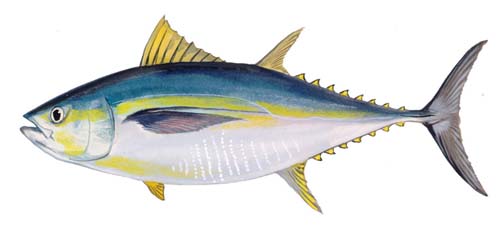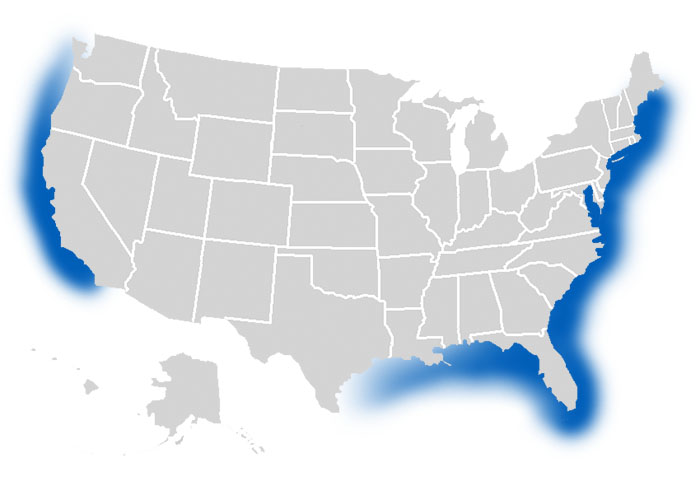Bigeye Tuna, also known as Ahi, forage in deep waters of temperate zones of the Atlantic, Pacific and Indian Oceans at depths of 250 meters. The best time to catch Bigeye Tuna is just before dark or dawn. The best technique for catching Bigeye Tuna is trolling using squid, mullet, sardines, small mackerels.

Habitat: Ocean
How to identify Bigeye Tuna
The bigeye tuna’s pectoral fins can extend as far back as the second dorsal fin. Although the yellowfin and bigeye have many similarities, there are features that set them apart. When comparing bigeyes to yellowfins, the yellowfin’s second dorsal and anal fins reach further back than the bigeye. Bigeyes also have liver striation and matching sizing of both right and left lobes, whereas yellowfins have a smoother liver and a long right lobe.
The bigeye’s first gill arch has a set of about 23-31 rakers. Having a striated liver margin, the two sets of dorsal fins are set closely together. The bigeye’s anal fin is either dark brown or yellow with possible white edging. The first set of dorsal fins are dark yellow, whereas the second set is dark brown like the anal fins. Their vibrant yellow finlets have a thin, black edging.
There are very little to no unique markings on the bigeye’s body; however, some of them may have white spotting in vertical rows on their vent.
Where to catch Bigeye Tuna
The warm waters of the Atlantic, Pacific, and Indian Oceans are home to the bigeye tuna. They are known to gather in schools in the deep waters of the open ocean during the day and make long-distance seasonal migrations. Other species of tunas, including the bluefin and yellowfin, often gather in schools towards the surface of warm waters.

The following are habitats where you can catch Bigeye Tuna:
How to catch Bigeye Tuna
Commercial fishermen are required to have a permit to harvest bigeye tuna in all state waters except Connecticut, Maine, and Mississippi. Bigeye tunas have sensitive eyes and prefer dim conditions. The best time to try to catch these fish is at dawn, or right before dusk. Some anglers even troll for them in the dark. Deep trolling using live bait or lures works well for these fish.
The following are effective fishing methods and techniques for catching Bigeye Tuna:
Best Lures, Bait & Tackle to catch Bigeye Tuna
Bigeye tunas can be baited with their typical diet of crab, shrimp, brine, krill, squid, mullet, sardines, small mackerels, and other deep-water marine life. For lures, choose 8- to 10-inch, shorter options in different patterns.
The following are fishing lures, bait and tackle that can be used to catch Bigeye Tuna:



